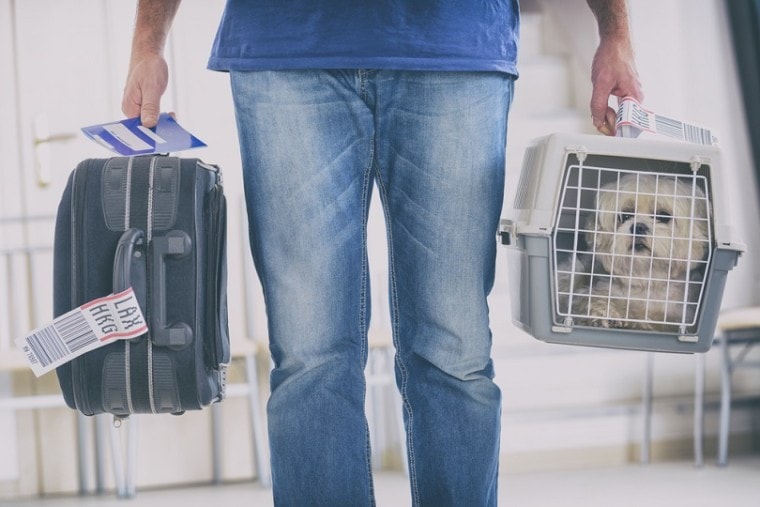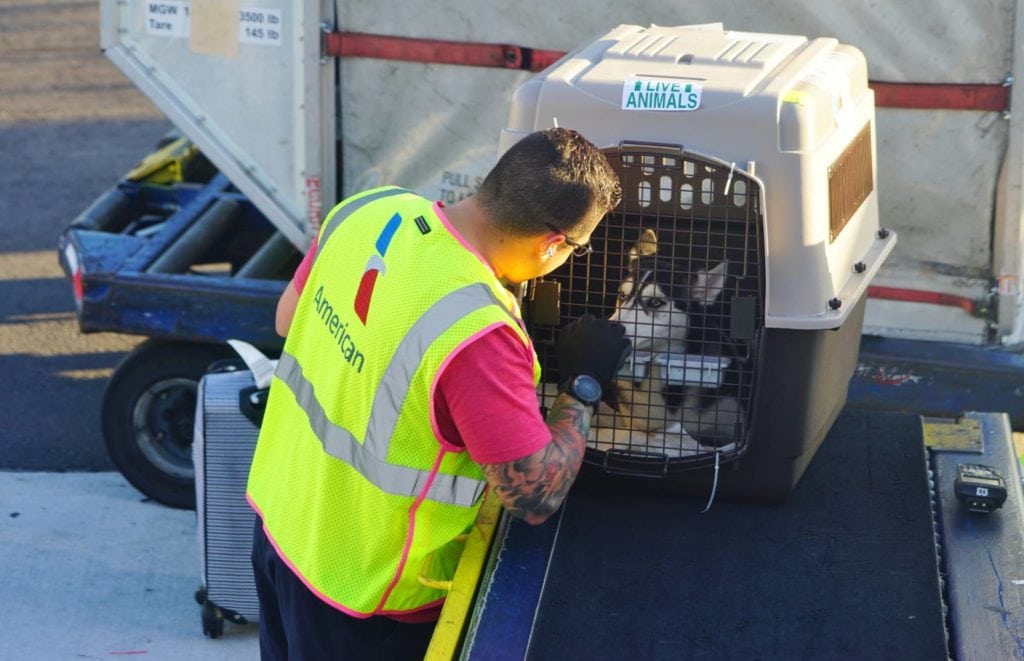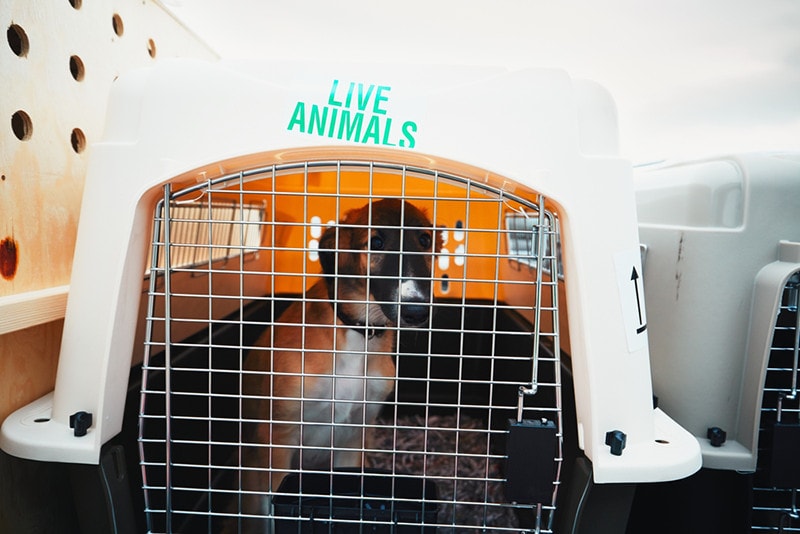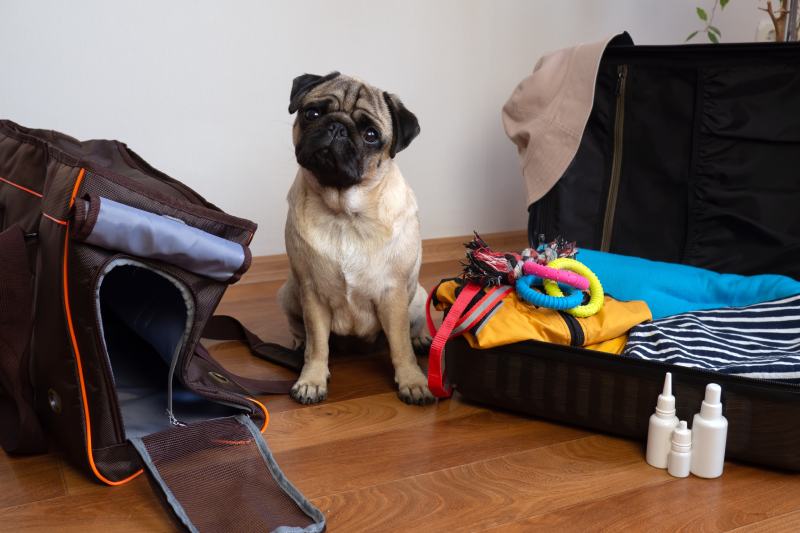
Canada and the United States have a special relationship, with roughly 400,000 people crossing the countries’ borders daily. Both have the health and safety of their citizens in mind with the various regulations involved with this process. Remember that being a tourist doesn’t give you a pass on the rules. The same consideration applies to your dog. The best advice we can give you is to research your obligations.
Regulations can change without notice. It’s your responsibility as an individual and pet owner to double-check what’s required. A simple phone call can save you a lot of hassle. Here are some things to consider:
The 12 Points to Consider Before Taking Your Dog to Canada
1. Dogs Older Than 8 Months Need Proof of a Rabies Vaccination
The good news is that you don’t need a health certificate for dogs older than 8 months to enter Canada. However, we suggest you get one in case your airline or accommodations require it. It is a time-sensitive document, so ensure you follow those rules. The chances are you must make a vet appointment, so plan ahead.
All dogs older than 3 months must have proof of a rabies vaccination. A tag won’t cut it. You must have a genuine document signed by your vet.
2. Pups Under 8 Months May Need a Health Certificate
Puppies under 8 months may need proof of a rabies vaccination and a health certificate. These pups are more vulnerable to disease, making the requirement valid. It’s worth noting that these things apply to personal pets. If you’re bringing a dog into Canada to sell or adopt them, the rules change. The same is true with animals shipped without their owners. These cases are considered commercial.
3. Airlines May Have Additional Requirements
Airlines often have additional requirements that exceed those between the two countries. They can vary and change without notice, too. Therefore, you should contact your carrier when booking your reservation and again as your travel date approaches. Many restrict pets to one per passenger. They often have carrier size requirements and other regulations for travel.

4. You Must Prove You’re the Dog’s Owner
We mentioned the difference between personal and commercial pets. That’s part of the reason behind the rule for showing proof of ownership. You may not be asked to produce it, but you should have it with you, just in case. It will also show you obtained your dog before arriving in Canada.
5. You Might Have to Give Advance Notice of When You’re Arriving
This point might not apply in all cases. However, the country takes the humane treatment of animals very seriously. An inspector will examine your dog to ensure it’s healthy. The primary contact may also have another agent look at your pup. Therefore, you may have to give notice of your arrival to the Canadian inspectors.
6. The Province of Ontario and Many Municipalities Have Breed-Specific Legislation (BLS)
This point raises a controversial topic you may face if you own a Rottweiler, Great Dane, or an American Staffordshire Terrier. The Province of Ontario and many other municipalities have breed-specific legislation restricting what dogs you can bring into various places. Sadly, these laws blame the animal and punish responsible pet ownership.
We strongly urge you to determine if any place you plan to visit has these restrictions in place. Many municipalities are strict on these regulations, which can give them the power to confiscate some dogs. They don’t make exceptions for tourists, either.

7. You May Have to Pay an Inspection Fee
Depending on your situation, you may have to pay an inspection fee to have your dog and its paperwork examined. Remember that countries like Canada and the United States have worked hard to ensure they are not at high risk for dog rabies. It’s a small price to pay for the peace of mind of the Canadian citizens that it stays that way.
8. Pets Being Adopted Must Have a Microchip or Tattoo
You won’t have to have your pup microchipped or tattooed to enter Canada—that is unless it’s classified as a commercial pet. That applies to dogs for adoption and fostering and not just monetary transactions. You must also present proof of fulfilling this requirement at the time of the inspection.
9. You Can Bring Up to 44 Pounds of Pet Food With You
Of course, your pup needs food on the road. You can bring up to 44 pounds with you. However, it must be in unopened packages and with you when you enter the country. The regulations further point out that the food must be for your pet. You can also bring back up to 50 pounds going home by vehicle. The limit is 20 pounds per family if traveling by air.

10. Be Prepared
We recommend bringing a copy of your pet’s health records with you whenever you travel. That applies to Canada or any place away from home. Murphy’s Law has a nasty habit of rearing its ugly head at the most inopportune times. It can save you a lot of time and trouble having them with you if something unfortunate happens on the road.
11. Individuals With a DUI/DWI on Their Driving Record Need Special Permission to Enter the Country
If you have a prior conviction on your record, you must apply for a Temporary Resident Permit (TRP) before traveling to Canada with your dog. That includes DUI/DWI convictions. Things have changed with border crossings in recent years, even if they seem like another hoop you must jump through to visit the country.
12. Don’t Forget About Your Other Requirements
Individuals entering Canada must have proper identification that includes a valid US passport or an enhanced driver’s license. You don’t need a visa if you stay less than 180 days. There are often delays in issuing passports during peak travel times. Ensure yours is current as soon as you decide to travel up north. Otherwise, all the work you did for your dog will be for naught.

Conclusion
Canada is a gorgeous place to visit, with many pet-friendly hotels and activities to share with your canine BFF. However, it’s a different world these days, so you must plan your international excursion. Fortunately, it’s easy to get all you need together for a safe and hassle-free trip. Just be sure to cover your bases as well as your pup’s to-do list.
Featured Image Credit: Monika Wisniewska, Shutterstock






